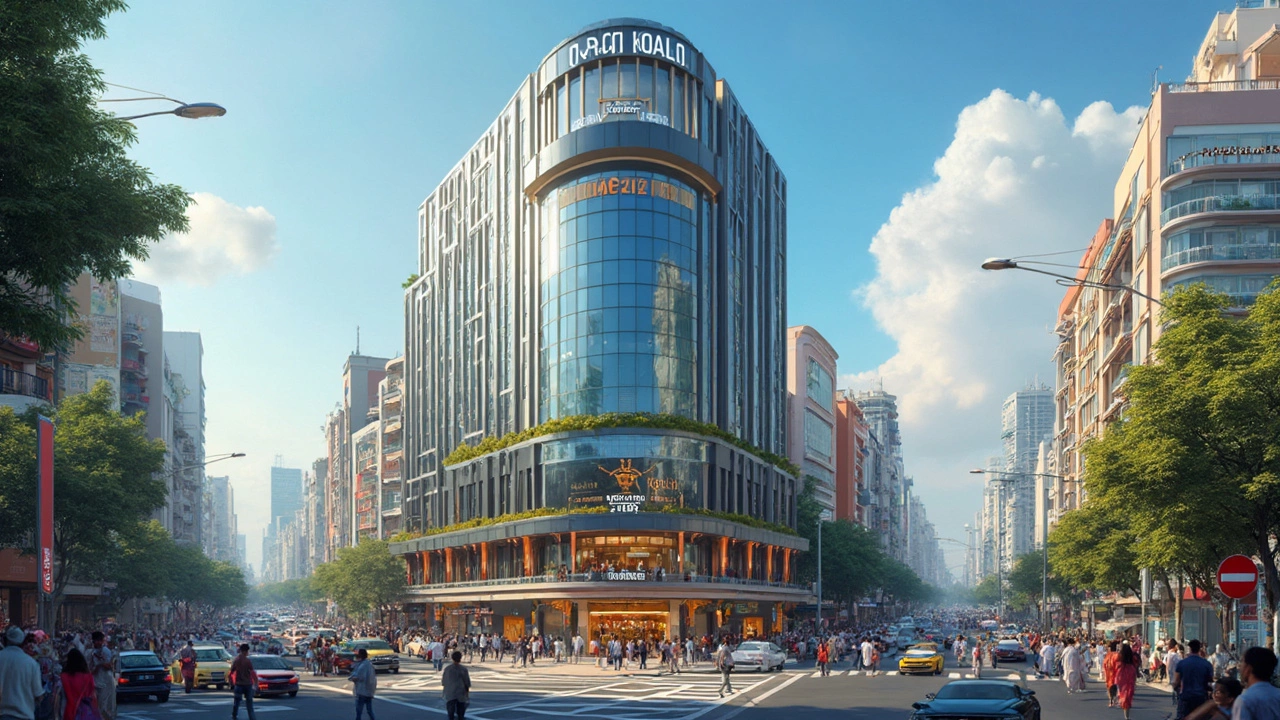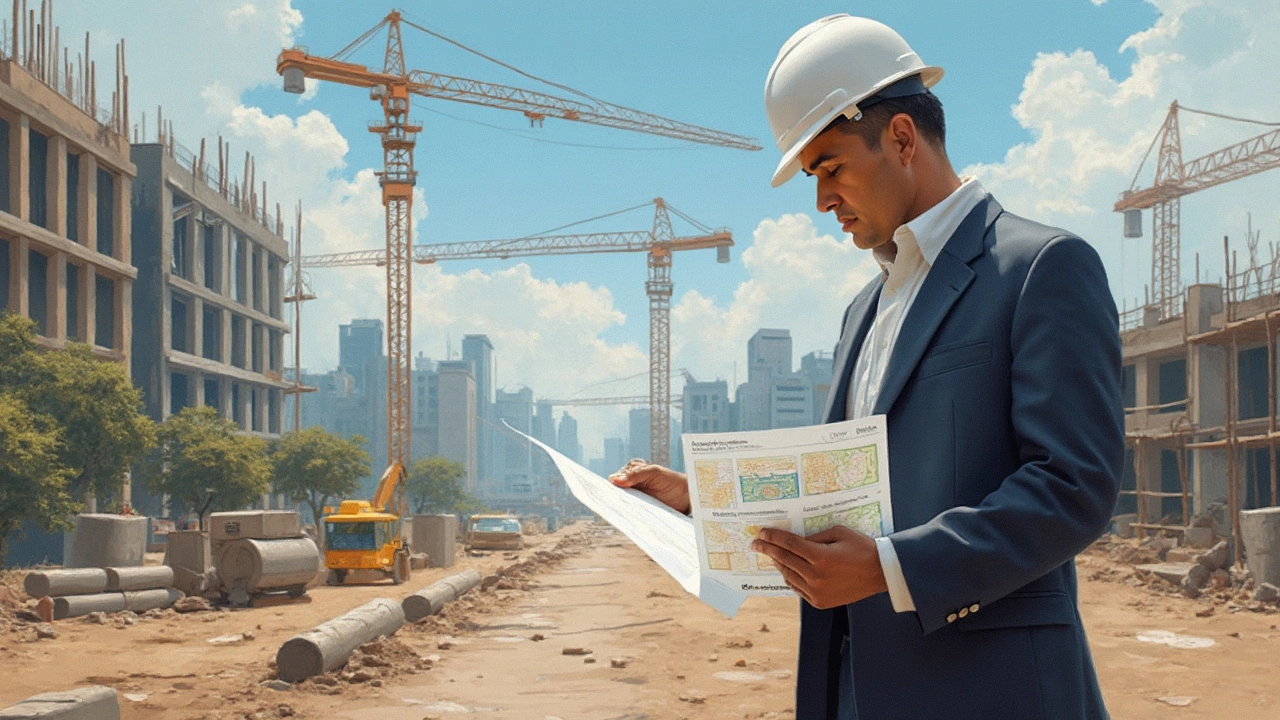What Makes a Building a Commercial Building?

So, you've probably seen those tall buildings downtown with shiny glass windows and bustling lobbies. Ever wondered what makes them 'commercial'? It's not just about the height and glitz. Commercial buildings are those used for business purposes like offices, malls, or hotels.
One key thing that sets them apart is their design tailored for business activities. Whether it’s the layout of office spaces or the accessibility of retail areas, everything is planned to keep businesses running smoothly. Sounds practical, right?
Now here's something to chew on: regulations. Commercial buildings must meet strict codes to ensure safety and accessibility. We're talking about fire exits, disability access, and more. It's like having a rulebook, but for buildings!
Interested in diving into this world? Stay tuned for some tips on investing in commercial real estate and why it might just be your next smart move.
- Defining Commercial Buildings
- Key Features of Commercial Properties
- Understanding Regulations and Compliance
- Investment Tips for Commercial Real Estate
Defining Commercial Buildings
Alright, let's break it down. What exactly makes a building commercial? At its core, a commercial building is any structure used to generate a profit, typically through business activities. We're talking about places like offices, shopping centers, hotels, and even some warehouses. These buildings are all about supporting commerce and trade activities.
Unlike residential properties, which are designed for living, commercial structures are crafted with business in mind. Take a high-rise office tower, for example. It's equipped with numerous floors to host a variety of companies, each needing its own area to operate and entertain clients. The design prioritizes accessibility, functionality, and efficiency to cater to business processes.
Now, an interesting thing to note is how zoning laws come into play here. Cities are mapped out with certain areas designated for specific uses. Commercial zoning ensures that business activities are in spots that make sense, like central business districts or near transport hubs. This categorization helps keep things organized and maximizes the potential for business growth.
Commercial buildings can vary drastically in size and type. While a small, local boutique fits into this category, so does a massive hotel chain. That's why knowing the vast range of commercial buildings matters, especially when considering an investment in such properties.
Here's a tidbit of info: According to recent reports, the global commercial real estate market size was valued at approximately $33 trillion. This figure gives you an idea of the massive scope and the vast number of opportunities in this sector.
Key Features of Commercial Properties
When it comes to commercial buildings, some features make them stand out from a regular house or apartment complex. First up, these buildings are designed with business in mind, and that means they need to accommodate different businesses comfortably. So, you'll often find large open spaces that can be customized by tenants to fit their business needs—the flexibility is key here!
Another thing you might notice about commercial properties is their robust infrastructure. We're talking advanced HVAC systems, state-of-the-art elevators, and maybe even backup power generators. These are not just fancy add-ons; they're essential to keep business operations steady, come rain or shine.
Accessibility is also a biggie. Commercial properties usually offer ample parking, easy access to public transport, and features like ramps and elevators to comply with accessibility regulations. You know, it’s all about making it easy for people to get in and out without a hassle.
Lastly, most commercial buildings are strategically located. You’ll find them in business districts or other bustling areas, making them super convenient for employees, clients, and customers alike. So, if you're eyeing an investment or just curious about what makes these structures tick, take note of these features—they're pretty much the crux of any commercial space!

Understanding Regulations and Compliance
Diving into commercial construction can feel like navigating a maze with all its codes and rules. But it's not as daunting as it seems once you get the hang of it. Regulations are basically there to make sure commercial buildings are safe, accessible, and environmentally friendly.
Firstly, let’s talk about building codes. They cover everything from structural integrity to fire safety. In the U.S., the International Building Code (IBC) is a big one that sets standards nationwide, though local alterations can tweak things a bit. If you're thinking of building or renovating a commercial property, checking these rules is step number one.
Next up, accessibility. The Americans with Disabilities Act (ADA) requires that public spaces be accessible to everyone. This means features like ramps, elevators, and accessible restrooms are a must. It sounds basic, but missing these can lead to hefty fines and even shutting down till things get sorted.
Energy efficiency is another biggie. Regulations encourage designs that minimize energy use, like using LED lighting or installing solar panels. The aim? Saving the planet while also reducing long-term costs for owners and tenants.
Now, here’s a little extra info you might find interesting: Commercial buildings are often subject to inspections throughout and after construction. These ensure that every little detail aligns with the local laws. It's a hassle if you're not prepared, but totally manageable if you stick with the rules from the start.
Whether you're looking to build, buy, or just curious, knowing these regulations inside out can give you a huge advantage. You'll not only avoid trouble, but maybe even find opportunities to optimize your building, turning compliance from an obligation into a competitive edge.
Investment Tips for Commercial Real Estate
Thinking about diving into the world of commercial real estate? It's a serious venture but can be super rewarding if you play your cards right. Here's how you can make smart decisions and potentially reap some nice returns.
First off, location is king. Seriously, it's no joke when they say it's all about 'location, location, location'. You want to find places where businesses thrive. Look for properties in busy urban centers or growing neighborhoods where the foot traffic is high and the business environment is buzzing.
Next, do a deep dive into the market trends. Stay updated on what's hot in the commercial buildings scene. Are more companies opting for shared office spaces, or do they prefer traditional setups? Riding the current trends can help you make decisions that are both timely and lucrative.
Team up with pros. A real estate agent specializing in commercial properties can be a great ally. They know the ins and outs and can steer you away from potential pitfalls. And if numbers aren't your thing, bring in a financial advisor to help you understand the nitty-gritty of potential returns and expenses.
Don’t forget about those important regulations we talked about before. When you're investing, make sure that potential properties adhere to all the necessary safety and accessibility standards. A quick run through compliance checks can save you from a heap of headaches later.
Let's break down a few figures to ponder over:
| Factor | Importance |
|---|---|
| Location | 50% |
| Market Trends | 20% |
| Professional Guidance | 10% |
| Regulatory Compliance | 20% |
This little table gives you a snapshot of how much weight these elements carry in the decision-making process.
Finally, keep a diverse portfolio. It's like the old saying, don’t put all your eggs in one basket. Spread your investments across different types of commercial buildings, like office spaces, retail centers, and maybe a hotel or two, to balance risk and reward.
With these tips in mind, you'll be better prepared to step into the commercial construction world and find opportunities that align with your financial goals.
Write a comment